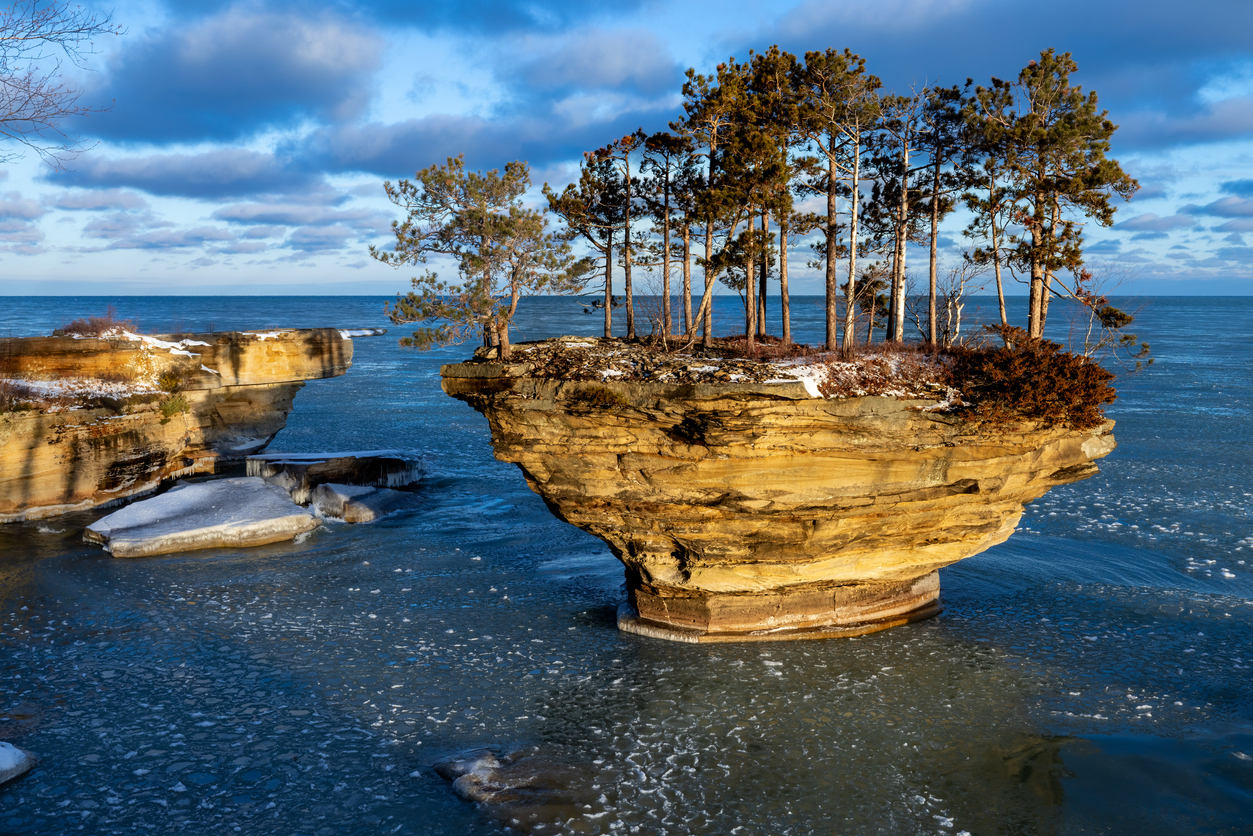Overview:
-The Great Lakes are experiencing a significant drop in water levels, with predictions showing all lakes, except Lake Erie, falling below last year's levels through July.
-Lake Superior, Michigan, and Huron are expected to decrease by 6 inches, while Lake Ontario is set to drop by 8 inches.
-This winter's pronounced evaporation, caused by cold air over warm water, has contributed to the decline.
After hitting record highs in the summers of 2019 and 2020, water levels are dropping sharply in the Great Lakes.
Water levels on lakes Superior, Ontario, Erie, St. Clair, Michigan, and Huron are predicted to fall well below last year’s levels through July, with only Lake Erie expected to stay close to long-term averages, according to the U.S. Army Corps of Engineers’ forecast. All the lakes are expected to remain well above record lows.
Lake levels tend to dip in winter on account of evaporation caused by cold air moving over relatively warm water. This effect was especially pronounced this winter, when extremely cold air met with warmer-than-average lake surface temperatures.
“There’s indications that we observed not only a fairly dry fall with not much precipitation, but then we also suspect there was above normal evaporation over this winter,” Megan Royal, a hydraulic engineer with the Corps, told Planet Detroit.
Great Lakes water levels have dropped an average of 2 to 4 feet from the record highs set in the summers of 2019 and 2020, Royal said. The change has been most dramatic in Lake St. Clair, where water levels have fallen about 4 feet. In contrast, Lake Superior has seen closer to a 2-foot decrease.
MORE GREAT LAKES NEWS
Wetlands rules face rollback under Trump: Great Lakes pollution next?
Michigan will retain more water quality protections than many states but could still be impacted by pollution from other states or changes to state law.
NOAA layoffs endanger Great Lakes, experts say: ‘The drivers behind keeping us safe’
NOAA layoffs by Trump could hurt response to algal blooms, interrupt forecasts, undermine Great Lakes health.
Detroit River cleanup spotlighted in Michigan’s 2024 Great Lakes report
Michigan’s 2024 State of the Great Lakes report underscores efforts to enhance water quality and ecosystem health in the Detroit River. This includes monitoring toxic PFAS chemicals, phosphorus, and bacteria, and implementing strategies to curb phosphorus runoff causing harmful algal blooms in western Lake Erie.
The Corps’ most recent monthly forecast finds that over the next six months:
- Lake Superior levels will be 3 to 6 inches below last year and 6 inches below long-term averages.
- Lake Michigan and Huron water levels will fall 11 to 14 inches below last year’s levels and 8 to 9 inches below their long-term averages.
- Lake St. Clair levels will drop 11 to 15 inches below last year’s levels but stay within 1 to 4 inches of long-term averages.
- Lake Erie levels are predicted to fall 11 to 13 inches from last year but stay close to long-term averages.
- Lake Ontario is expected to be 8 inches below last year’s levels and 3 to 6 inches below long-term averages.
Much of the Great Lakes Basin could see an increase in both heat and precipitation over the next 90 days, according to the National Oceanic and Atmospheric Administration’s seasonal outlook.
Ohio and Indiana as well as most of Michigan’s Lower Peninsula and parts of Illinois and Wisconsin will have above average chances of precipitation, while eastern portions of the basin are predicted to be hotter than average.
An increase in rainfall over the summer could have a bigger impact on lake levels than heat, Royal said; yet a hot summer could have an impact next winter, where warm surface temperatures on the lakes could once again drive evaporation and lead to falling water levels.





